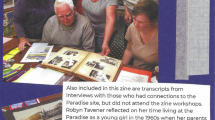Abstract
The postmodern idea of “return to the origin” of a literary text characterizes almost all literature. Italo Calvino’s Invisible Cities is a reconstruction of The Travels of Marco Polo, but despite the strong connections between the two texts, little attempts have been made to apply this intertextual relationship in a reading of Invisible Cities. Identifying such connections could lead to insightful thoughts about a particular text and consequently a deeper understanding of literature in general. Following Linda Hutcheon’s theory on postmodern parody, this study explores the parodic features of Calvino’s novel in relation to the medieval book and their implications for a reading of Invisible Cities. It is concluded that Calvino engages in a self-reflexive dialogue with his readers and, at the same time, uses his characters to reflect the agents of this conversation. Furthermore, it is shown that by manipulating structure and the tenets of postmodernism, Calvino reflects the nature of postmodern urban experience in Invisible Cities.
Similar content being viewed by others
Notes
For some insights from architects on Calvino’s cities, see for example Karina Puente’s collections of “Intricate illustrations of Italo Calvino’s ‘Invisible cities’” and “Italo Calvino’s ‘Invisible cities’, illustrated (Again)” in ArchDaily [Accessed at 12th September 2022].
References
Baldi, E. A. (2020). The author in criticism: Italo Calvino’s authorial image in Italy, the United States, and the United Kingdom. Fairleigh Dickinson University Press.
Barth, J. (1984). The literature of replenishment. In The Friday book: Essays and other non-fiction (pp. 193–206). The Johns Hopkins University Press.
Barthes, R. (1994). The semiotic challenge (Trans., R. Howard). University of California Press.
Booth, W. C. (1974). A rhetoric of irony. University of Chicago Press.
Breiner, L. A. (1988). Italo Calvino: The place of the emperor in Invisible cities. Modern Fiction Studies, 34(4), 559–573.
Calvino, I. (1974). Invisible cities (Trans., W. Weaver). Harcourt Brace Jovanonich Publishers.
Calvino, I. (1983). Italo Calvino on “Invisible cities.” Columbia: A Journal of Literature and Art, 8, 37–42.
Calvino, I. (1986). The uses of literature: Essays (Trans. P. Creagh). Houghton Mifflin Harcourt.
Calvino, I. (1993). Six memos for the next millennium. Vintage Books.
Calvino, I. (2002). Mondo scritto e mondo non scritto (Ed., M. Barenghi). Mondadori.
Calvino, I. (2012). Sono nato in America…: Interviste 1951–1985. Mondadori.
Calvino, I. (2013). Collection of sand: Essays (Trans., M. McLaughlin). Houghton Mifflin Harcourt.
Calvino, I. (2014). Hermit in Paris: Autobiographical writings (Trans., M. McLaughlin). Mariner Books.
Cannon, J. (1991). Italian postmodernism and Lezioni Americane. Annali d’Italianistica, 9, 198–211.
Cavallaro, D. (2010). The mind of Italo Calvino: A critical exploration of his thought and writings. McFarland.
Gudger, E. W. (1933). Marco Polo and some modern things old in the Asia of his day. The Scientific Monthly, 37(6), 496–510.
Hutcheon, L. (1989a). Historiographic metafiction: Parody and the history. In P. O’Donnell & R. C. Davis (Eds.), Intertextuality and contemporary American fiction (pp. 3–32). Johns Hopkins University Press.
Hutcheon, L. (1989b). The politics of postmodernism. Routledge.
Hutcheon, L. (1994). Irony’s edge: The theory and politics of irony. Psychology Press.
Hutcheon, L. (2000). A theory of parody: The teachings of twentieth-century art forms. University of Illinois Press.
Hutcheon, L. (2003). A poetics of postmodernism: History, theory, fiction. Routledge.
Jackson, P. (1998). Marco Polo and his Travels. Bulletin of the School of Oriental and African Studies, 61(1), 82–101.
James, C. P. (1982). Seriality and narrativity in Calvino’s Le città invisibili. MLN, 97(1), 144–161.
Larner, J. (1999). Marco Polo and the discovery of the world. Yale University Press.
Markey, C. (1999). Italo Calvino: A journey toward postmodernism. University Press of Florida.
Masefield, J. (1907). Introduction. In M. Polo, The travels of Marco Polo, the Venetian. J.M. Dent & Sons.
McLaughlin, M. M. (2008). Calvino’s rewriting of Marco Polo: From the 1960 screenplay to Invisible cities. In S. C. Akbari & A. Iannucci (Eds.), Marco Polo and the encounter of East and West (pp. 182–200). University of Toronto Press.
Moosavinia, S. R., & Baji, M. (2016). Reader’s unresolved conflict: Minimal departure from the game of make-believe in Italo Calvino’s Invisible cities. ANQ: A Quarterly Journal of Short Articles, Notes and Reviews, 29(4), 260–262. https://doi.org/10.1080/0895769X.2016.1232152
Morison, S. E. (1986). The great explorers: The European discovery of America. Oxford University Press.
Mukhija, V. (2015). Learning from Invisible cities: The interplay and dialogue of order and disorder. Environment and Planning A: Economy and Space, 47(4), 801–815.
Olshin, B. B. (2014). The mysteries of the Marco Polo maps. University of Chicago Press.
Polo, M. (1918). The travels of Marco Polo, the Venetian (Trans., W. Marsden). J.M. Dent & Sons.
Ricci, F. (1995). The quest for sonship in Le città invisibili and “La strada di San Giovanni” by Italo Calvino. Forum Italicum, 29(1), 52–75.
Wilson, R. (1992). City and labyrinth: Theme and variation in Calvino and Duranti’s cityscapes. Literator, 13(2), 85–96.
Wood, F. (1996). Did Marco Polo go to China? Martin Secker & Warburg Limited.
Wood, M. (1998). Hidden in the distance: Reading Calvino reading. The Kenyon Review, 20(2), 155–170.
Funding
The authors did not receive support from any organization for the submitted work.
Author information
Authors and Affiliations
Corresponding author
Ethics declarations
Conflict of interest
The authors have no competing interests to declare that are relevant to the content of this article.
Additional information
Publisher's Note
Springer Nature remains neutral with regard to jurisdictional claims in published maps and institutional affiliations.
Rights and permissions
Springer Nature or its licensor (e.g. a society or other partner) holds exclusive rights to this article under a publishing agreement with the author(s) or other rightsholder(s); author self-archiving of the accepted manuscript version of this article is solely governed by the terms of such publishing agreement and applicable law.
About this article
Cite this article
Moosavinia, S.R., Ahmadzadeh, B.M. Italo Calvino’s Invisible cities as a postmodern parody of The travels of Marco Polo. Neohelicon 50, 743–759 (2023). https://doi.org/10.1007/s11059-023-00687-9
Accepted:
Published:
Issue Date:
DOI: https://doi.org/10.1007/s11059-023-00687-9




